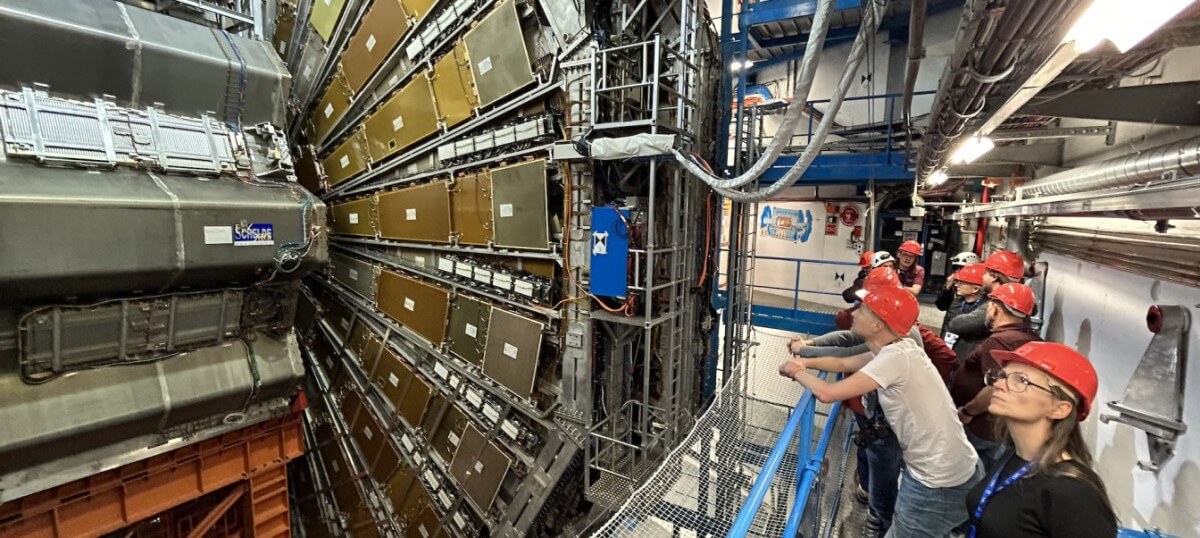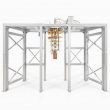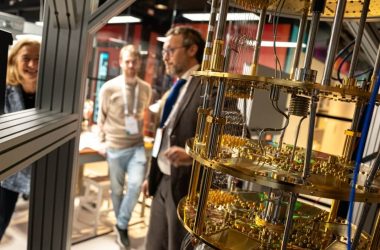

The successful test occurred over a 1648 km fiber link that spans from Amsterdam to Geneva, intersecting Belgium and France. This link is part of the expansive SURF-network, a critical infrastructure connecting various national research and education institutes in the Netherlands, including Nikhef, the Dutch National Institute for Subatomic Physics.
Moreover, this network interlinks with global research networks and experiments, such as the Large Hadron Collider (LHC) Optical Private Network (LHCOPN), facilitating access to the LHC at CERN – home to the world’s largest and most powerful particle accelerator.
“Data transmission from the HL-LHC at CERN to Amsterdam is quite practical, as proved by the 800Gbit/s technology showcased with Nokia and SURF,” said Tristan Suerink, IT-Architect at Nikhef. “Facilitating the transfer of the vast amounts of data generated by the tests is essential, as Nikhef is hard at work designing and constructing the detectors that will be a part of the HL-LHC. We had the exceptional chance to see what lies ahead by collaborating with SURF and Nokia on this cutting-edge trial. We are eager for what is ahead because it appears to be brilliant and amazing!”
The European Organization for Nuclear Research
This technological trial is pivotal for the forthcoming High-Luminosity Large Hadron Collider (HL-LHC) expected to be operational by 2029 at CERN, the European Organization for Nuclear Research. The HL-LHC aims to delve deeper into the mysteries of the universe, building on discoveries such as the Higgs boson which has already dramatically reshaped our understanding of the cosmos. The HL-LHC will exponentially increase data production – generating data five times faster than its current rate – underscoring the necessity for robust, high-speed data transmission solutions provided by advancements like those demonstrated by Nokia and SURF.
“The 800Gbit/s technology that was showcased with Nokia and SURF indicates that it will be extremely possible to transfer data from the CERN’s HL-LHC to Amsterdam,” said Ron Augustus, Chief Innovation Officer, member of the Board at SURF. “Transferring the enormous volumes of data produced by the trials is essential as Nikhef is working hard to design and construct the detectors that will be a part of the HL-LHC. Collaborating with SURF and Nokia on this ground-breaking experiment afforded us a special chance to see what lies ahead. We are eager for the bright and amazing future that lies ahead!”
The trial not only showcased the transmission capabilities over existing legacy fiber optics but also demonstrated the vast, untapped potential of these legacy infrastructures to meet the burgeoning demands of modern scientific research. By utilizing the sixth-generation super-coherent Photonic Service Engine (PSE-6s) from Nokia, coupled with SURF’s line system equipped with third-party technology, the partners successfully executed the 800Gb/s transmission using 16QAM-shaped PCS modulation. This achievement highlights a significant leap forward in maximizing the performance and capacity of existing network infrastructures.
Global Research and Education Networks
Through this collaboration, Nokia and SURF have illustrated that the existing network can be enhanced to support the high-capacity needs of cutting-edge scientific research. The experiment involved not just technical testing but also integrated real production workflows expected to become standard once the HL-LHC is fully operational. Such real-world applications would underscore the readiness of the network to handle the data-intensive requirements of future research endeavors.
The implications of this successful transmission are profound. It means that institutions like CERN, Nikhef, and SURF can continue to push the boundaries of scientific discovery without the immediate need for costly and extensive network overhauls. Instead, they can leverage existing resources to facilitate the rapid exchange of large data sets across countries and continents, ensuring that the global scientific community remains at the forefront of innovation and discovery.
“Breakthrough test events such as these demonstrate how networks can be vital to efforts to discover the universe’s secrets and how their function improves our capacity to learn and develop as a society,” said James Watt, Vice President and General Manager, Optical Networks at Nokia. “This experiment is evidence of Nokia and SURF’s leadership in the optical networking field, as well as their inventiveness and spirit of cooperation. In addition to assisting SURF in getting ready for the upgrade of CERN’s particle accelerator, we are eager to collaborate with other global research and education networks to further their goals and facilitate state-of-the-art discoveries.”









